Love Your Smile
Same Day Dental Implants Expertise
The dental implants and implant dentures we design and surgically place at Allstar Implants Plus give you a secure new smile, so you can eat the foods you love and feel confident again.
What are the best options for full-mouth implants?
When you’re considering implants for a full arch of replacement teeth, we’ve found that as we review your options together at Allstar Implants Plus, it helps to think in terms of the type of attachments used with your dental implant.
The attachment (or abutment) is the part that connects your full arch of replacement teeth to the dental implants that we’ve surgically placed in your jawbone.
There are two (2) types of dental implant abutments for a full arch of replacement teeth: ‘screw-in’ and ‘snap-in.’
The type of full arch dental implants and abutments you choose depends on your lifestyle and your budget. Let's dive in and see what's best for you!
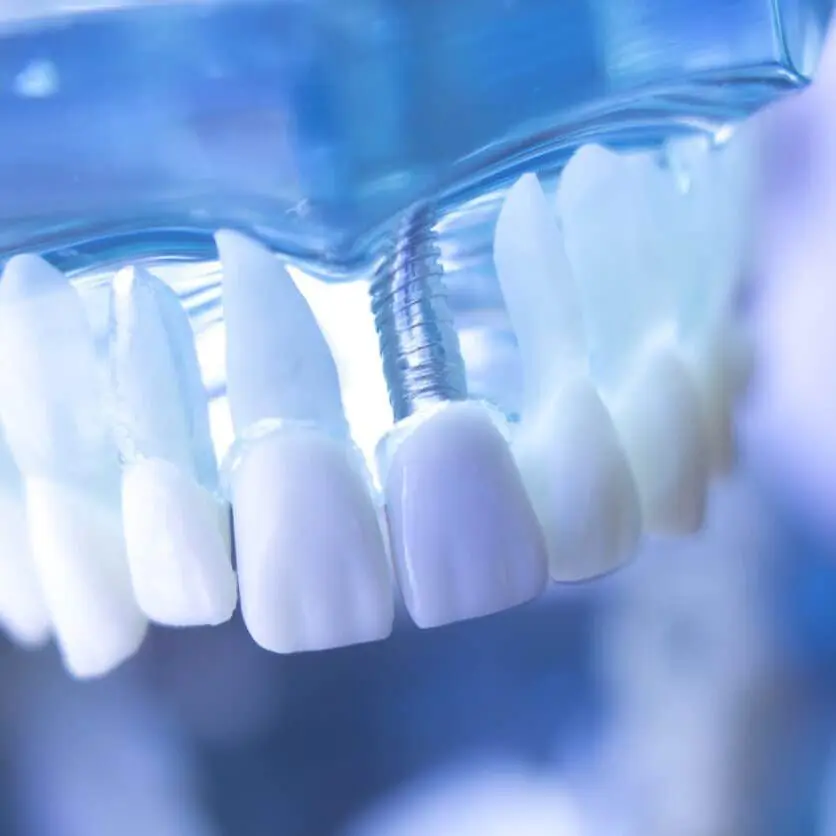
All-on-4: Screw-In Full Arch Dental Implants
Like you might expect from the description, with a screw-in abutment, your full arch of replacement teeth attaches to the dental implants in your jaw bone via a screw mechanism. Only the dentist can unscrew, or remove, your replacement teeth—and of course, screw them back in place!
This aspect can be very appealing, since it makes you feel as though you have new ‘natural’ teeth, as you’re not able to remove your full arch of replacement teeth. Because of this, however, you’ll want to be especially diligent in seeing the dentist regularly for your periodic cleanings, so that your replacement teeth can be removed, and the areas around your dental implants cleaned.
With this option—which is often referred to as ‘All-on-4’ or ‘permanent full mouth implants’—at Allstar Implants Plus we’ll surgically place a minimum of 4 dental implants in your jaw, and depending on your bone levels, up to two more if possible.
All on X: Snap-In Full Arch Dental Implants
With a snap-in abutment, your full arch of replacement teeth attaches to the dental implants in your jaw bone—(yes, you guessed it!)—via a snap mechanism, that securely anchors your new teeth in place. This option is often called ‘All on X’ dental implants or ‘All on 6’ —and sometimes even called ‘All on 4’ dental implants. Confusing, right?!
The important thing to keep in mind is that you’ll have 4—or more—dental implants per arch surgically placed to support your new teeth.
In addition to being less costly than the screw-in dental implants, many people choose the snap-in option because you can independently remove your full arch of artificial teeth.
Once unsnapped, you can clean the area around your dental implants at home (similar to brushing your natural teeth) to help keep bacteria at bay, and then snap your new teeth securely back into place again.
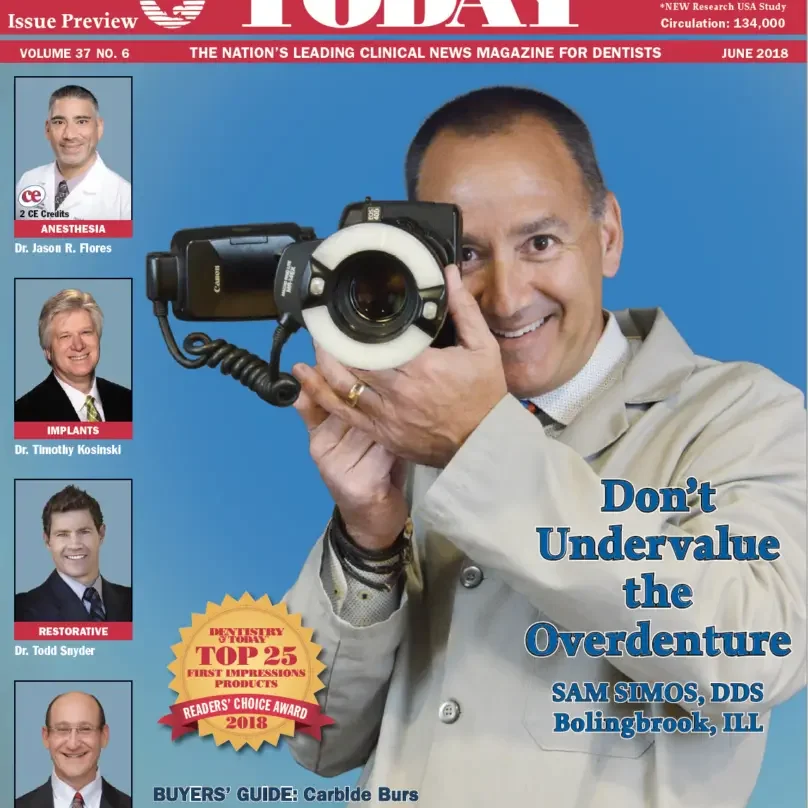
Dental Implants Expertise - Dr Sam Simos
At Allstar Implants Plus, you don't have to see multiple doctors or travel to different offices. Our implant experts care for your entire treatment in the comfort of our office from start to finish.
Meet Dr. Sam Simos: Teaching Other Dentists
Dr. Sam Simos is highly experienced and knowledgeable in both dental implant surgery and cosmetic dentistry.
Unlike most dentists, Dr. Simos is a widely published author on the use of dental implants, cosmetic dentistry, restorative dentistry, and digital and 3D printing in dentistry.
While a clinical instructor at the Las Vegas Institute for Advanced Dental Studies, Dr. Simos has taught thousands of dentists on topics including cosmetic dentistry, occlusion (the way your teeth come together), full arch and full mouth restoration.
Counted amount Dr Simos' clients are celebrities, Grammy Award winners, and people from near and far who seek out his experience for their smile.
This high level of expertise allows Dr. Simos to design, surgically place and accurately position your dental implants to achieve optimal function and cosmetic results for your new teeth.
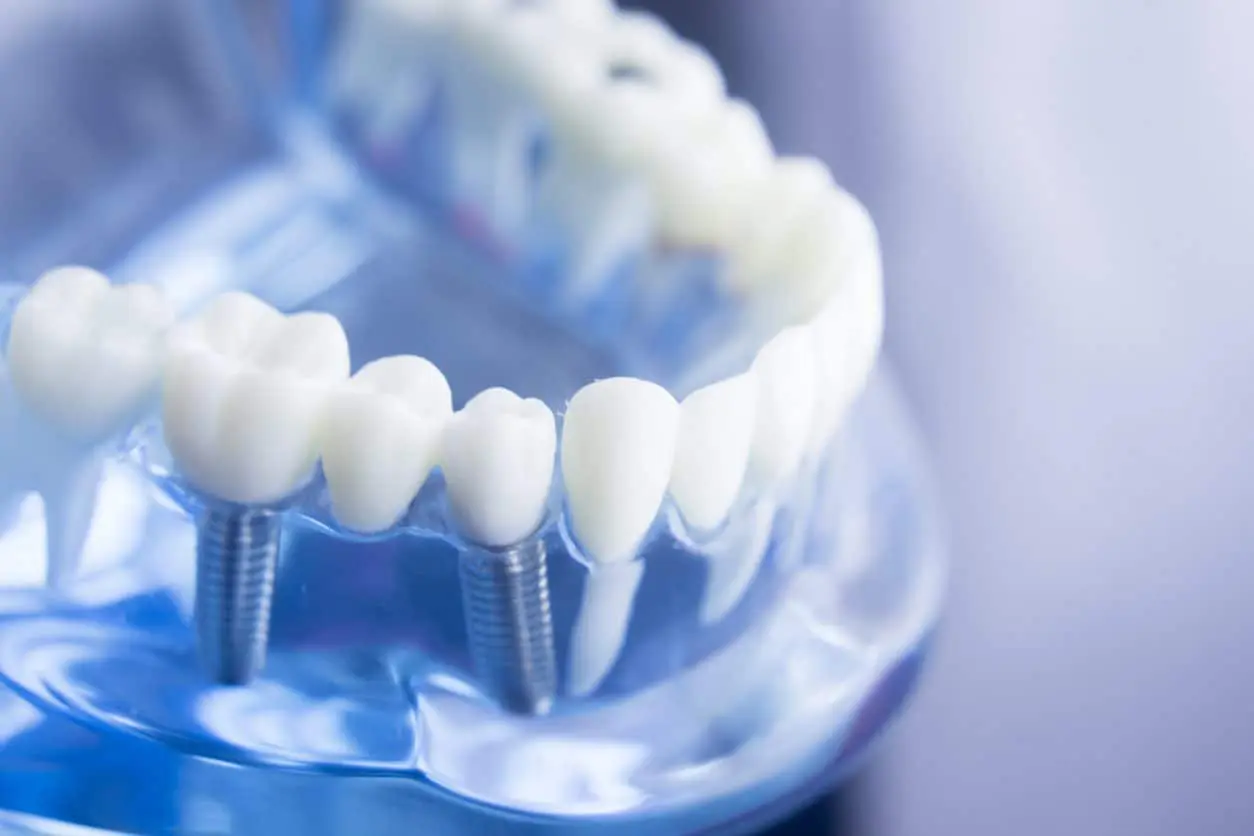
Implant Bridge
So, what is an implant bridge? A great way to think about this is to imagine an actual bridge between two land areas: In this case, you have a structure that spans some distance where there is no land over which you can travel.
Similarly, an implant bridge spans an area of missing teeth, creating a ‘bridge’ of new replacement teeth that are supported on either end by two (2) or more implants, depending on the number of missing teeth in the area.
At Allstar Implants Plus, our implant surgeon and cosmetic expert (you've heard all about him--Dr Sam Simos!) will surgically place the optimal number of dental implants into your jawbone, custom-design your new replacement teeth, and ensure your bite is spot on. Your new implant bridge will be attached to the dental implants, and will be fixed—in other words, it’s not removable, like a partial denture.
A common question we hear is: Do I need one (1) dental implant for each replacement tooth with an implant bridge?
The answer: No, you do not. You’ll need at least 2 dental implants to support an implant bridge. Similar to a full arch of replacement teeth, the area of missing teeth to be spanned, and the quality of bone in this area, will determine the optimal number of implants needed to secure your implant bridge.
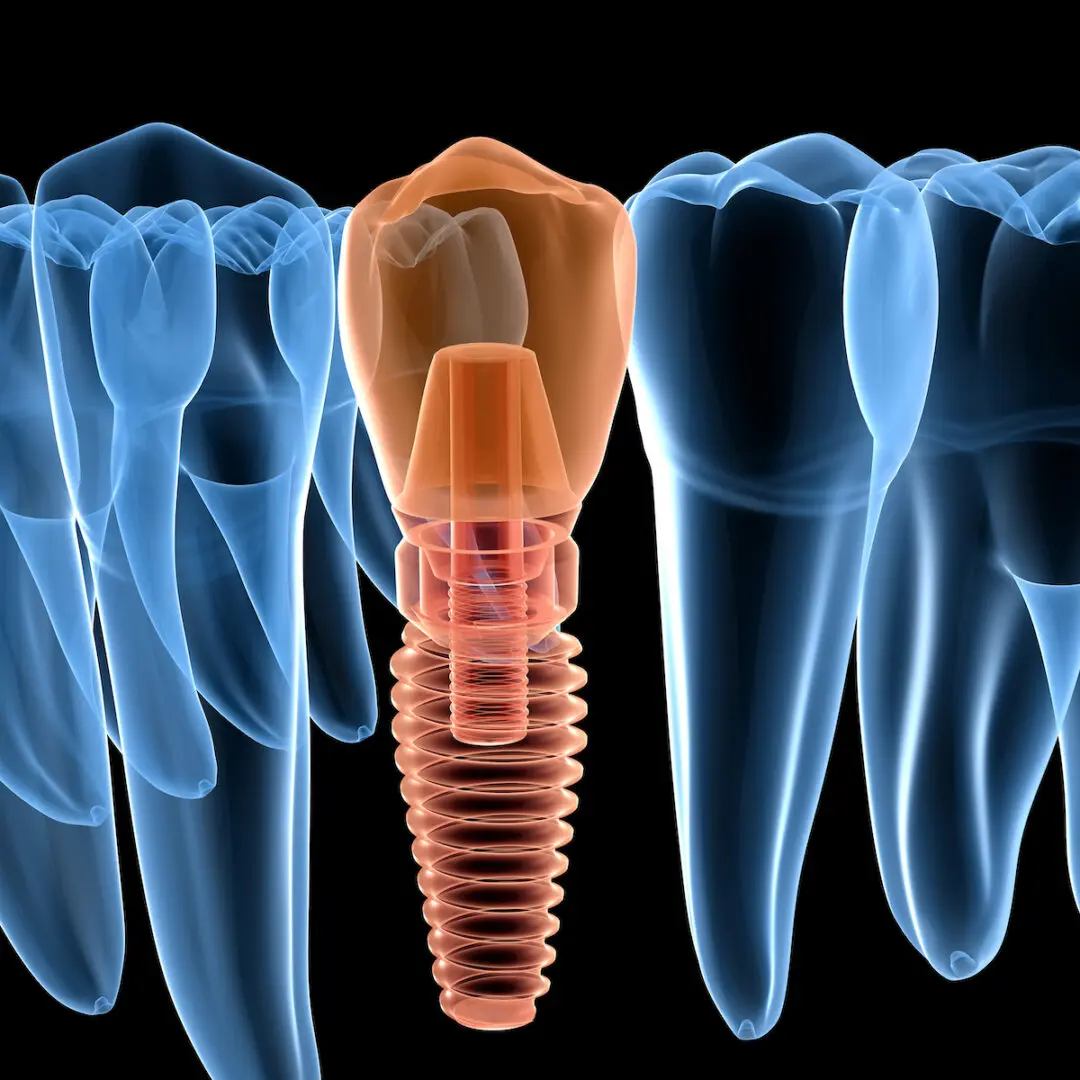
Dental Implant - Single Tooth
If you have an area with one (1) missing tooth (either in the very back or between two natural teeth), then a single tooth dental implant is a great option for a replacement tooth. Similar to an implant bridge, your replacement tooth will be fixed.
At Allstar Implants Plus, we’ll surgically place the dental implant in your jawbone, custom design, and attach your new replacement tooth, ensuring that its shape, proportions and color shading blends beautifully into your smile.
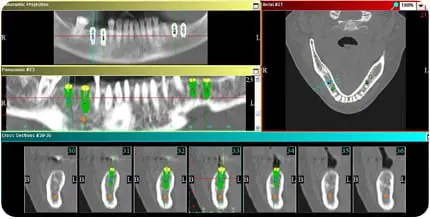
3D CBCT Imaging: What It Is and Why You Need It
Typical digital x-rays are two-dimensional (flat) black and white images, even if the x-ray scan is taken from one side of your jaw around your head to the other side. While a typical x-ray might provide some initial clues about your bone, it doesn’t allow us to determine the breadth (width), depth (length), or density (thickness) of your jawbone areas with accuracy. Enter the 3D CBCT imaging.
A three-dimensional cone beam computed tomography (3D CBCT) imaging scan of your jaw bone areas is the only way to see the cross-sectional and three-dimensional view of your jaw and any existing teeth.
An experienced implant surgeon (like Dr. Sam Simos at Allstar Implants Plus), will not start your dental implant treatment without a 3D CBCT imaging scan. It’s only with the 3D CBCT scan that a full and accurate assessment can be made.
What you'll see with 3D CBCT Imaging:
The 3D CBCT imaging lets us determine (1) the quality of your bone, (2) the need for additional bone grafting, and (3) where dental implants can be optimally placed in your jaw bone, without disruption to critical nerve and sinus areas.
At Allstar Implants Plus, we’ll also use your 3D CBCT scan to create a custom surgical guide, based on the virtual placement of your implants in the 3D CBCT scan. This means that on the day of your implant surgery, your implant surgeon, Dr. Sam Simos, will use the guide created to ensure that the placement of your implants is precise, predictable, and comfortable for you
FAQs : What You Want To Know About Dental Implants
World class smile expertise
Feel comfortable and at ease
Affordable cost & no surprises
Smile Care from A to Z
Ready to schedule your free consult? Contact us today!




